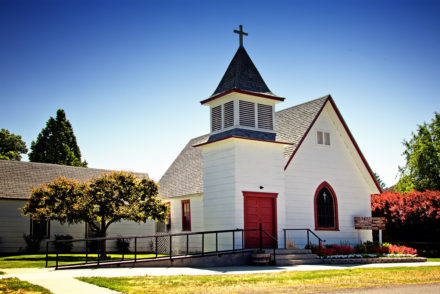Harriet’s mother taught public school for forty years. When a student did something extraordinary Lib Thomas would present that seventh grader with a rusty nail. She wasn’t a pessimist or dooms-dayer but told the teens that Jesus gave the best he had and, on earth, what he got was rusty nails. So, they should expect little recognition in this life and do the best they could do without anticipating any payoff. At her death, her casket was covered in a gorgeous floral spray. Hundreds of rusty nails were wired to the flowers in her honor.
Modern sophisticates don’t relish the idea of the nails. This week we’ll purchase bags of synthetic grass, jelly beans, Peeps, eggs to color, chocolate, and other commemoratives to celebrate Christ’s resurrection. Most of us won’t include nails in our Easter flamboyance. In fact, a good many Christian congregations won’t even commemorate the agonies associated with Holy Week, taking a pass on the darker elements of his passion. A few years ago a group of medical professionals wrote an opinion piece about our Lord’s death, a somewhat gory post-mortem of what happened to him on Good Friday. People actually walked out of worship services when their pastors referenced the medical analysis of his death. We’re just not into the nails part.
We are resurrection people and celebrating that glorious event is central to our observance of the Lord’s Day. Our calendar is arranged so we can rejoice in the empty tomb every single Sunday. Somewhere in time comfortable people let the nails part slide. The scourging and blood and broken bones and agony just don’t resonate with a culture that worships ease. How can we comprehend, however, the miracle of his having been raised without intimate association with his suffering and death? Let me note several truths—
1. Jesus commanded us to remember his death. In the ordinance of the Lord’s Supper he told his disciples to reflect on his body and blood when they remember him. It was the memorial to his atoning death. It cannot be a subtext of Easter faith, the truth of his death. We must preach the crucifixion, blood, nails, and his death throughout the Christian year and especially at Easter.
2. Paul prayed for fellowship with Christ’s suffering. The Epistle to the Philippians includes this monumental phrase—“that I may know him and the power of his resurrection, and may share his sufferings, becoming like him in his death, that by any means possible I may attain the resurrection from the dead” (Philippians 3:10-11). Fellowship with Christ’s suffering is essential to our understanding of what it means to be a Christian.
3. Jesus ransomed his people with his blood. Peter wrote it this way, “knowing that you were ransomed from the futile ways inherited from your forefathers, not with perishable things such as silver or gold, but with the precious blood of Christ, like that of a lamb without blemish or spot” (1 Peter 1:18-19). Apart from the blood, we are still eternally lost in our sin.
4. Our mission is to proclaim the glories of the cross. Paul declared the centrality of the cross in his preaching ministry, “but we preach Christ crucified, a stumbling block to Jews and folly to Gentiles, but to those who are called, both Jews and Greeks, Christ the power of God and the wisdom of God” (1 Corinthians 1:23-24).
Easter celebrates the resurrection of Jesus and the promise of eternal life to those called by him. The empty tomb testifies to this new life, the transformation of our self-absorbed nature to the likeness of him who was raised, and the glories that attend this life now and forever. Pastors, spiritual leaders, teachers, and parents should lead those entrusted to their care in Bible study during Holy Week that accentuates that week in our spiritual history. Glory in the resurrection. Rejoice and be glad.
Then, again, there are the nails. Our mission this day cannot sidebar the nails.






No Comments